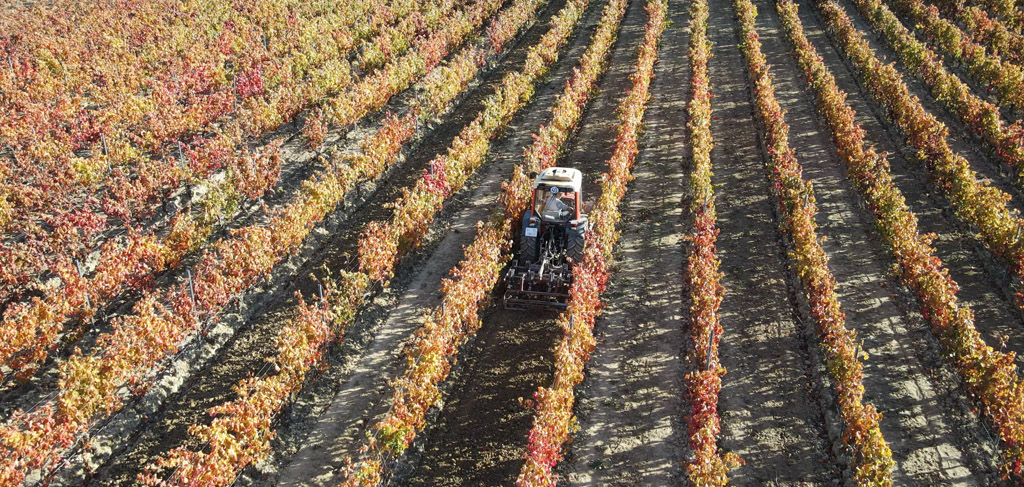
This week we return with an article focused on vineyard work at the beginning of the year. In today’s case, this work is about tilling the soil.
Coinciding with the end of winter and the beginning of spring, we can say that it is a good time to carry out this work. Tilling consists of removing the soil from the lanes between the rows of vines. The depth of this work will vary, depending on the composition of the soil, but we can establish a depth of between 15 or 20 cm. To do this, we use a tractor-drawn implement, which drives its coulters into the soil to achieve several objectives:
- On the one hand, we manage to break the structure of the soil, caked after the months of rest in which we have left the land throughout the winter. In addition to this, the moisture from the winter rains and snowfall tends to compact the soil, and, in this way, we crumble its structure.
- On the other hand, by breaking up this structure, we mix the lower layers with the upper ones, achieving more homogeneity in the tilled surface, which favors the optimum development of the vine.
- At the same time, by tilling, we manage to oxygenate the topsoil layer, even favoring the oxygenation of the subsoil, improving and multiplying the microfauna living in the soil. In the same way, this oxygenation will favor the decomposition and distribution of nutrients and minerals for absorption by the roots of the vines.
- Another advantage that we obtain with tilling is the improvement of the sponginess and absorption capacity before the foreseeable spring rains, opening the way for their filtration in the subsoil.
- Finally, we will eliminate weeds.
All this will always be done when the soil has a balance between humidity and dryness, so that the achieved texture is adequate.
